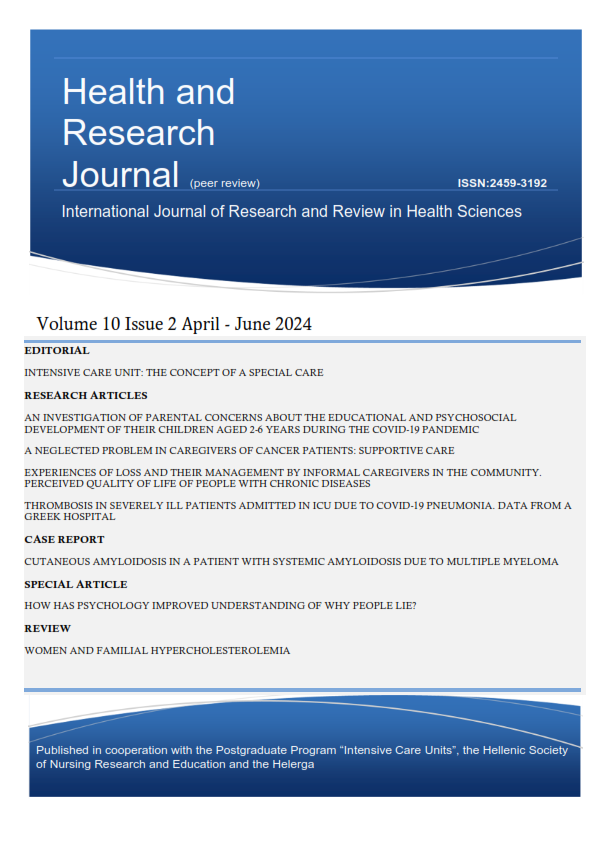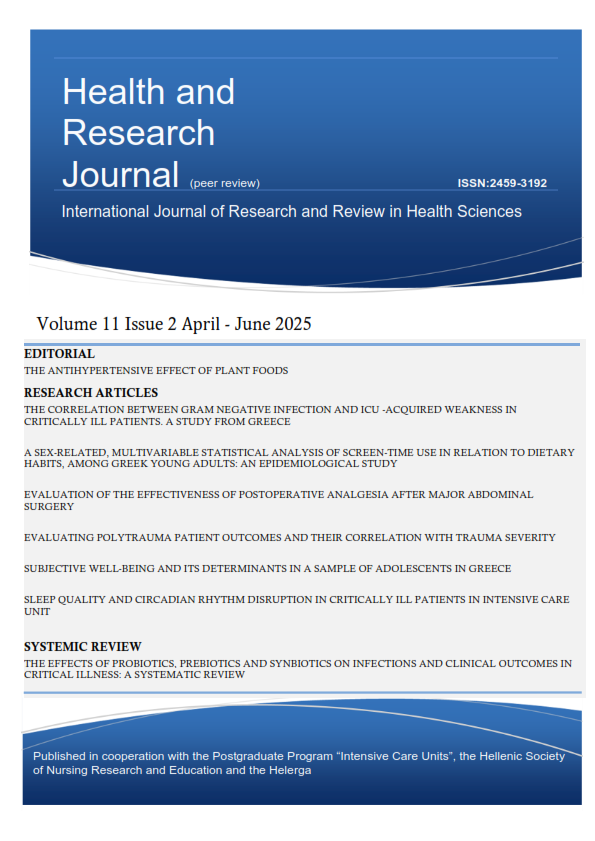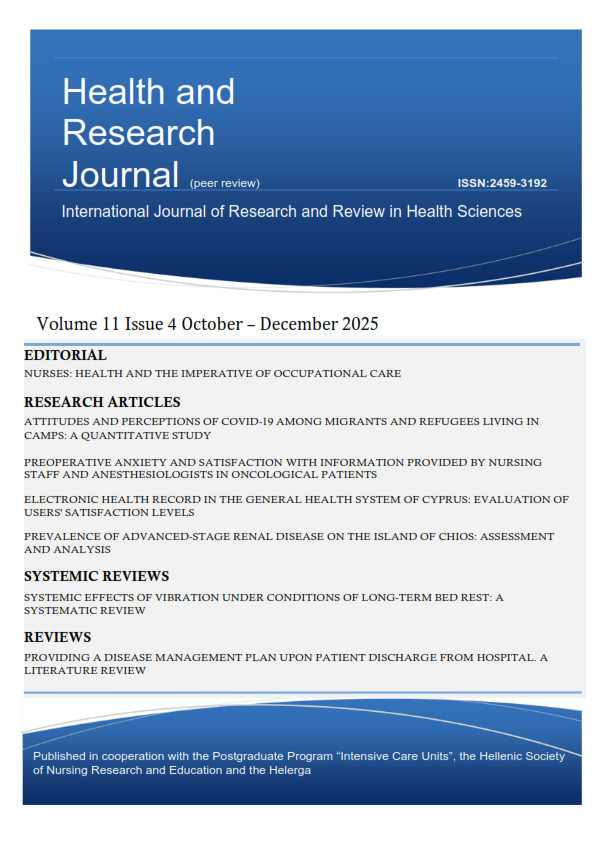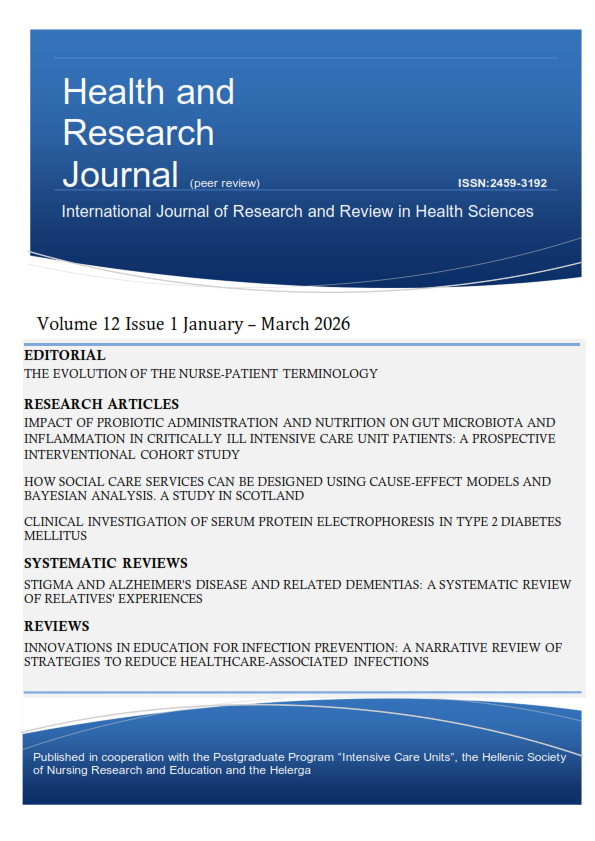Thrombosis in severely ill patients admitted in ICU due to COVID-19 pneumonia. Data from a Greek Hospital

Abstract
Background: SARS-CoV-2 can lead to a prothrombotic state and the activation of the body's coagulation mechanism, resulting in thrombotic episodes, especially in critically ill patients. The rates of thromboembolic disease in patients with COVID-19 vary and range from 10-40%, while in Greece the existing epidemiological data on the incidence of thromboembolic disease in the ICU are limited.
Aim This study aimed to determine the proportion of hospitalized COVID-19 patients who developed thromboembolic disease (pulmonary embolism, deep vein thrombosis, or arterial embolism). It was also crucial to investigate at the relationship between the incidence of VTE (venothrombosis-VTE) and Covid infection in ICU patients. After 28 days from ICU admission, the survival rate of patients with Covid infection admitted to ICUs within the specified time frame was also noted.
Method and Material: The study included 85 patients with Covid-19 infection who were hospitalized in two ICU departments in a large adult hospital in Athens between June and September 2021. The occurrence of VTE was diagnosed by computed tomography angiography, regarding the pulmonary embolism and with triplex veins of the lower extremities. Various epidemiological factors, laboratory findings and characteristics of the patients' hospitalization in the Intensive Care Unit were recorded.
Results: The incidence of VTE in patients with Covid-19 infection admitted to the Intensive Care Unit was 14% (12/85 patients). Patients who experienced VTE during their hospitalization in the Intensive Care Unit had more days on mechanical ventilation support, more days on vasoconstrictor drugs, and had been transfused more times with blood plasma. In the multivariate analysis that followed, it was found that total days of mechanical ventilation (p=0.02), total days of vasoconstrictor administration (p=0.03) and plasma transfusion (p=0.03) were still statistically significant.
Conclusion: In patients with Covid-19 infection and hospitalization in the Intensive Care Unit, longer stay on mechanical respiratory support, more days of vasoconstrictor drug administration and plasma administration are independent predisposing factors for the occurrence of VTE.
Article Details
- How to Cite
-
Pouriki, S., Agapitou, T., Lioliousis, G., Tsikrikas, S., & Manthou, P. (2024). Thrombosis in severely ill patients admitted in ICU due to COVID-19 pneumonia. Data from a Greek Hospital. Health & Research Journal, 10(2), 105–115. https://doi.org/10.12681/healthresj.36980
- Section
- Original Articles
Copyright notice:
The journal "Health and Research Journal" reserves the rights for copyright of the content of the website and also the copyright of the articles published.
By virtue of their appearance in this journal, the articles are free to be used for non-commercial purposes. However, the articles cannot and must not be used in anyway, published elsewhere or modified without any reference to the author and the first publication of the article.





